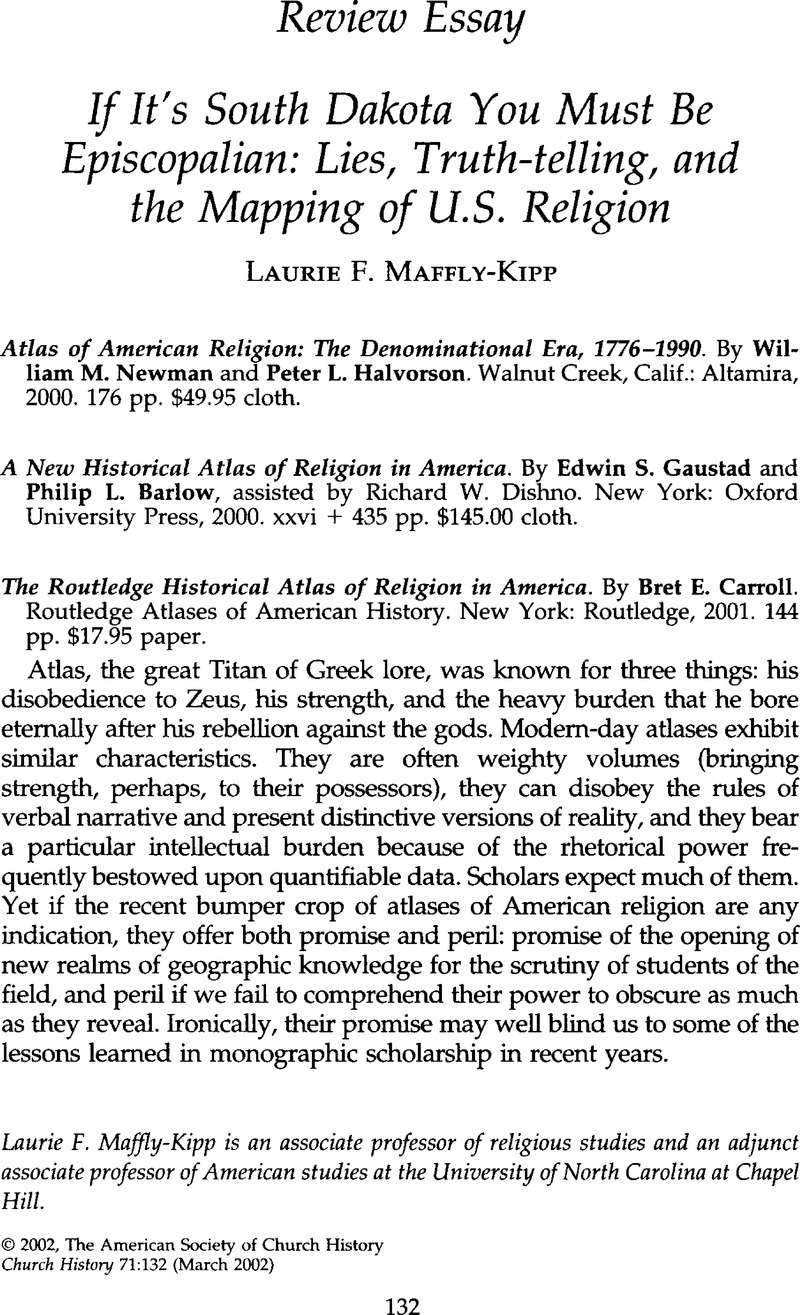Article contents
If It's South Dakota You Must Be Episcopalian: Lies, Truth-telling, and the Mapping of U.S. Religion
Published online by Cambridge University Press: 28 July 2009
Abstract

- Type
- Review Essay
- Information
- Copyright
- Copyright © American Society of Church History 2002
References
1. In his review of the revised edition that appeared in 1976, Hudson was equally laudatory, hailing the volume as “indispensable for an understanding of religion in America” (Church History 47 [03 1978], 100).Google Scholar
2. Monmonier, Mark, How to Lie with Maps, 2d ed. (Chicago: University of Chicago Press, 1996), 1.CrossRefGoogle Scholar
3. As of early December 2001, http://www.Amazon.com listed well over ten thousand books with the word “atlas” somewhere in the title.Google Scholar
4. Monmonier, , How to Lie, 183. The increasingly frequent use of spatial and geographical terminology in the study of religion is a fascinating subject in its own right. It is sometimes employed in a literal sense, to “situate” a religious experience or tradition in time and place through the use of the theories of cultural geography, but it is often used metaphorically to refer to abstract conceptual fields or “maps” of ideas.Google ScholarThe theoretical terminology of Smith, Jonathan Z., especially his highly influential Map is Not Territory: Studies in the History of Religions (Leiden: Brill, 1978), has surely been a foundational influence.Google ScholarPubMedFor more recent studies, see Lane, Belden C., Landscapes of the Sacred: Geography and Narrative in American Spirituality (New York: Paulist, 1988)Google Scholarand Park, Chris C., Sacred Worlds: An Introduction to Geography and Religion (New York: Routledge, 1994).CrossRefGoogle Scholar
5. Zelinsky, Wilbur, “An Approach to the Religious Geography of the United States: Patterns of Church Membership in 1952,” Annals of the Association of American Geographers 51 (06 1961): 139–93.CrossRefGoogle Scholar
- 1
- Cited by




